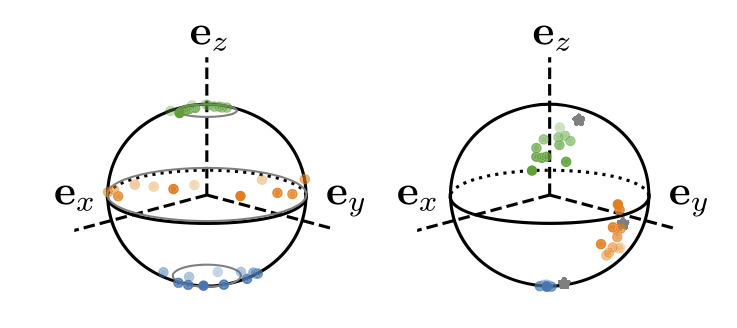Dynamically Induced Symmetry Breaking and Out-of-Equilibrium Topology in a 1D Quantum System

Nontrivial topology in lattices is characterized by invariants—such as the Zak phase for one-dimensional (1D) lattices—derived from wave functions covering the Brillouin zone. We realize the 1D bipartite Rice-Mele (RM) lattice using ultracold 87Rb and focus on lattice configurations possessing various combinations of chiral, time-reversal, and particle-hole symmetries. We quench between configurations and use a form of quantum state tomography, enabled by diabatically tuning lattice parameters, to directly follow the time evolution of the Zak phase as well as a chiral winding number. The Zak phase evolves continuously; however, when chiral symmetry transiently appears in the out-of-equilibrium system, the chiral winding number becomes well defined and can take on any integer value. When quenching between two configurations obeying the same three symmetries, the Zak phase is time independent; we confirm the dynamically induced symmetry breaking predicted in [McGinley and Cooper, Phys. Rev. Lett. 121, 090401 (2018)] that chiral symmetry is periodically restored, at which times the winding number changes by ±2, yielding values that are not present in the native RM Hamiltonian.
Dynamically Induced Symmetry Breaking and Out-of-Equilibrium Topology in a 1D Quantum System; G. H. Reid, M. Lu, A. R. Fritsch, A. M. Piñeiro, and I. B. Spielman; Phys. Rev. Lett. 129 123202 (2022). doi:10.1103/PhysRevLett.129.123202
